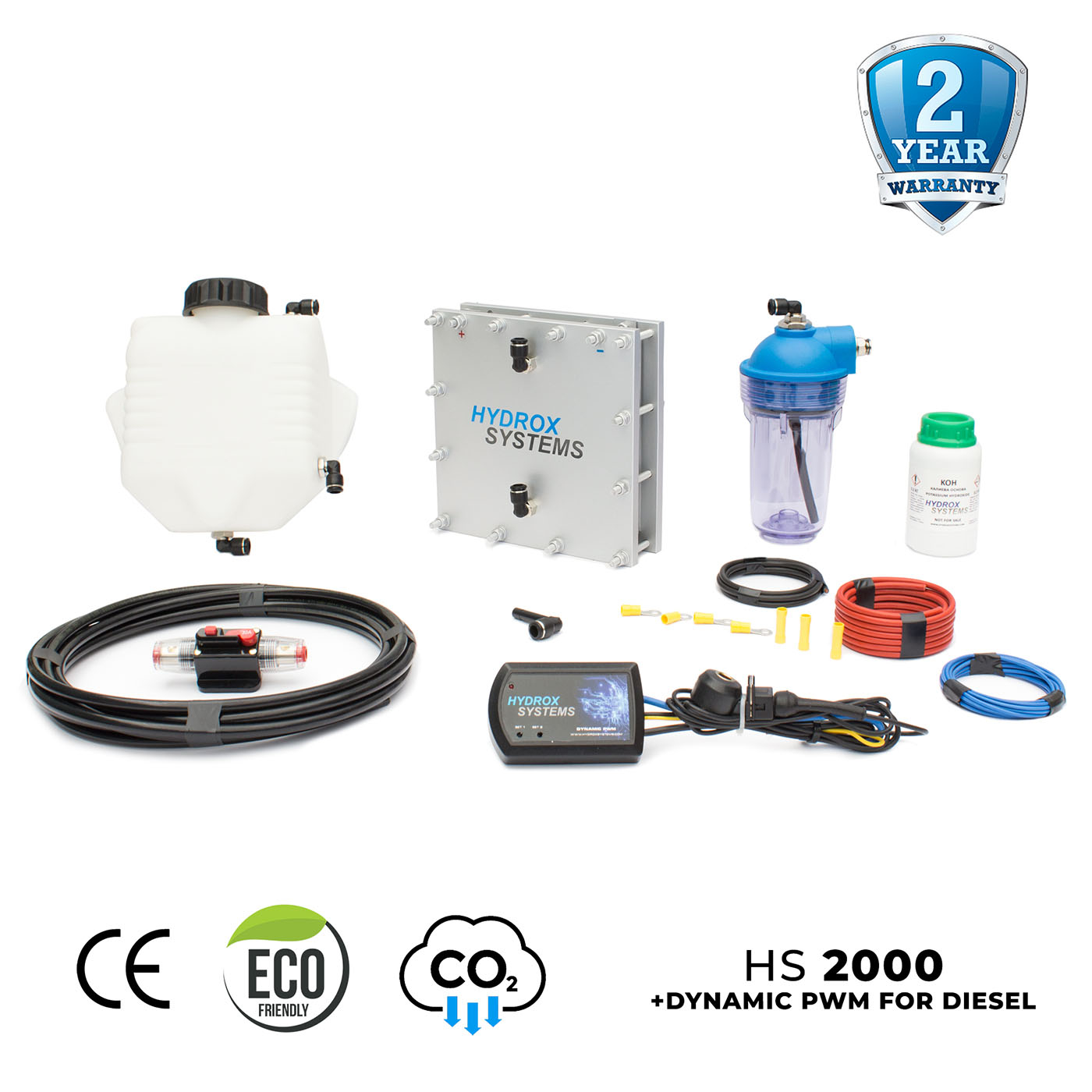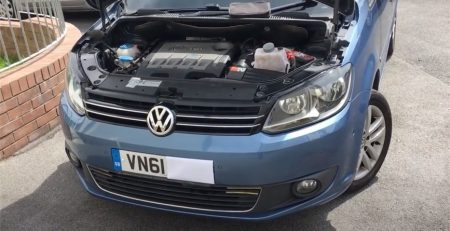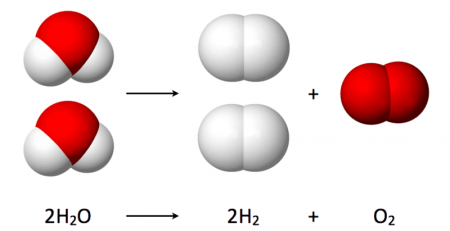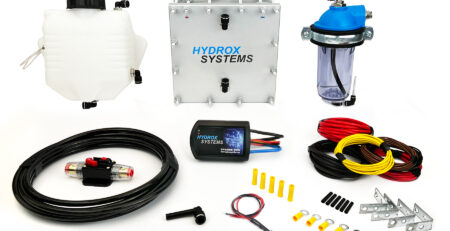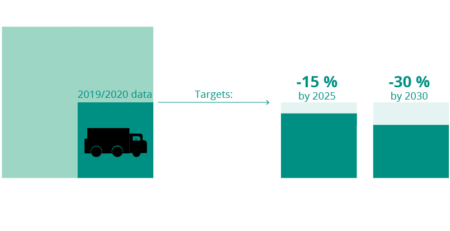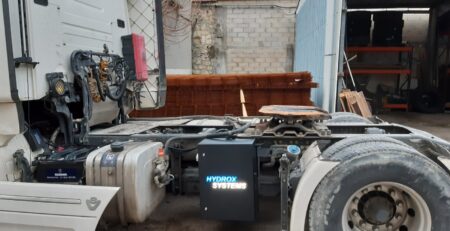How does the HHO kit work?
How does the HHO kit work?
Fundamental question!
Technology is not a secret science. Electrolysis is an electrochemical reaction. Many of you have heard about electrolysis in high school and are already in chemistry classes. The HHO dry cell is the electrolyzer, which produces HHO gas. The electrolyzer is made of Stainless steel plates, separated by gaskets with exact space between them. They have holes inside certain places so the electrolyte can go through. To produce HHO gas, you need to have two components:
Electrolytes for the system – These are consumable for operation.
Electrical power from the charging system of the vehicle 12.0-14.4V DC or 24.0-29.0V DC or any power supply that can give you 12 or 24V
HHO Kit looks like the one in the picture:
It has an HHO reservoir, an HHO dry cell, and an HHO bubbler. The first two items connect each other with two hoses. One is to fill the dry cell with electrolytes, and the other is to return the produced HHO gas to the reservoir. The lower hose releases an electrolyte to the bottom of the HHO Dry cell. When it starts working and producing HHO gas, which is lighter than the electrolyte, the gas returns to the reservoir with some amount of the electrolyte. This way, the electrolyte is circulating between the tank and the dry cell. Same like here in the video:
Then, the HHO gas is separated from the electrolyte, and from the top connector of the HHO reservoir, it goes to the bubbler, where it will be purified of rough steam. There might be some steam after a few hours of operation. Keep in mind that water vaporizes even at 20 degrees temperature. We are sure that only gas is going into the engine’s intake. Also, the HHO bubbler works as a flash-back arrestor in case a spark from the engine’s intake returns to the system.
The electrolyte is usually made of pure water and Potassium Hydroxide (KOH) or Sodium Hydroxide (NaOH)
You can also make it by adding Soda bicarbonate or white vinegar. There might be some odor of vinegar, and the Soda is vaporizing, becoming powdery, and blocking the gas hoses. We recommend the usage of KOH or NaOH. Both chemicals, KOH and NaOH, are usually on flakes with a purity of at least 90%
KOH or NaOH flakes dissolve very well in the water.
The chemicals create more conductivity in the water. The electrical current could pass much faster when the water is more conductive.
How does the HHO kit work? When we release voltage to the HHO dry cell, electrons practically pass through the electrolyte and the Stainless Steel plates and have current. The electrons are going from the positive plate to the negative plate. Between the positive and negative plates, there are also neutral SS plates. There must be at least 1.5-2.0V DC between every two plates, and the process starts. The electrons break up the bonds between the molecules of Hydrogen and Oxygen, so those elements get split. When they split up, they become in gaseous form. They are separated particles and become a homogenous mixture of 2 parts Hydrogen and 1 part Oxygen, so-called HHO.
When the HHO gas is formed in the HHO dry cell, on the way to the reservoir, separated from the electrolyte, it also pushes some of the electrolyte. This way, it circulates by itself and does not need any pump to help circulation. The voltage in most light vehicles is 12-14.4V DC and is limited to higher energy. If we need to produce more gas, it will require more load (Amps). By adjusting the Amps, we make more gas. More amps mean more gas per minute, but do not overload the HHO dry cell. Putting too many amps (load) on the HHO dry cell will heat up too much, and the electrolyte will start boiling. Respectively, it will vaporize more electrolytes. Simply, it will contain more electrolytes.
Remember that we are using electrical power from the vehicle’s charging system, which is also limited.
How does the HHO kit work and produce HHO gas? It’s effortless, isn’t it?!
Subscribe our Newsletter

